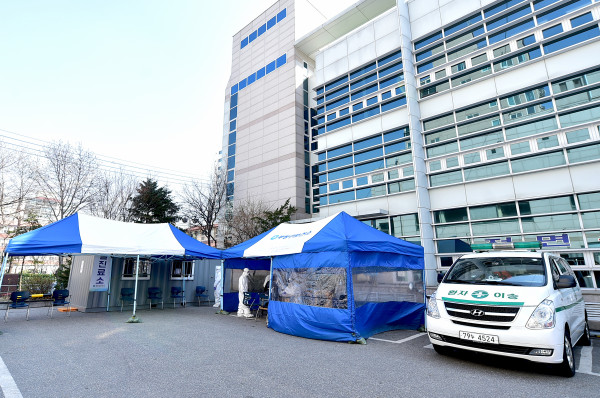e-Questionnaires will reduce infection/exposure at screening clinics and alleviate the fatigue of frontline staff
Incheon Metropolitan City has decided to introduce an e-questionnaire system to reduce the risk of exposure to infections at its COVID-19 screening clinics, and to reduce the fatigue levels of its frontline healthcare workers.
The City Government announced that it plans to expand the QR code-based medical e-questionnaire system, which is currently being pilot-tested at screening clinics in four counties and districts across the city, to all ten counties and districts under its jurisdiction.
Screening clinics at the four county/district health centers, including Jung-gu, Yeonsu-gu, Namdong-gu, and Ongjin-gun, started pilot-testing the QR code-based medical e-questionnaire system since last June.

▲The City Government announced that it plans to expand the QR code-based medical e-questionnaire system, which is currently being pilot-tested at screening clinics in four counties and districts across the city, to all ten counties and districts under its jurisdiction. Image of the screening clinic at the Bupyeong-gu Public Health Center.
The decision to expand the QR code-based e-questionnaire system was prompted by a university student who suggested the idea to Mayor Park Namchoon via SNS, to which the Major agreed.
The university student was concerned that the current testing system at screening clinics involves the process of waiting → interviewing → collecting → returning home. He pointed out that if a clinic saw a surge in patients waiting for testing, it would inevitably increase waiting time and the risk of contact, which could lead to another wave of confirmed COVID-19 patients.
Switching to an e-questionnaire using a QR code instead of filling out the questionnaire by hand can reduce the waiting time, lower the risk of infection, and reduce the workload of frontline healthcare providers at screening clinics.

▲ Introducing an e-questionnaire system using QR codes can reduce the pressure on frontline healthcare workers caused by handwritten questionnaires, and minimize problems such as patients writing erroneous phone numbers. Furthermore, an e-questionnaire can reduce the risk of infection caused by the high concentration of people waiting to be tested. Image of the Bupyeong-gu screening clinic
Mayor Park Namchoon saw that the university student’s suggestion was valid and instructed the relevant departments to review the expansion of the e-questionnaire system. The instructed departments determined that the results of the four pilot trials were effective, and decided to expand the system to all ten screening clinics across the city.
With the QR code-based electronic medical questionnaire system, the subject scans the QR code on the spot, then fills out an e-questionnaire. Once the e-questionnaire is complete, a healthcare worker check’s the subject’s ID and responses written on the e-questionnaire, then prints a barcode for the subject. With the barcode printed, a sample specimen is collected from the subject for testing.
Introducing this can reduce the pressure on frontline healthcare workers caused by handwritten questionnaires, and minimize problems such as patients writing erroneous phone numbers. Furthermore, an e-questionnaire can reduce the risk of infection caused by the high concentration of people waiting to be tested.
The Incheon Metropolitan City Government plans to bring the medical e-questionnaire system using QR codes on line across all screening clinics at the remaining six counties and districts by the end of the week.
For subjects who do not own or use a smartphone, however, the regular handwritten questionnaire will be available at each screening clinic.